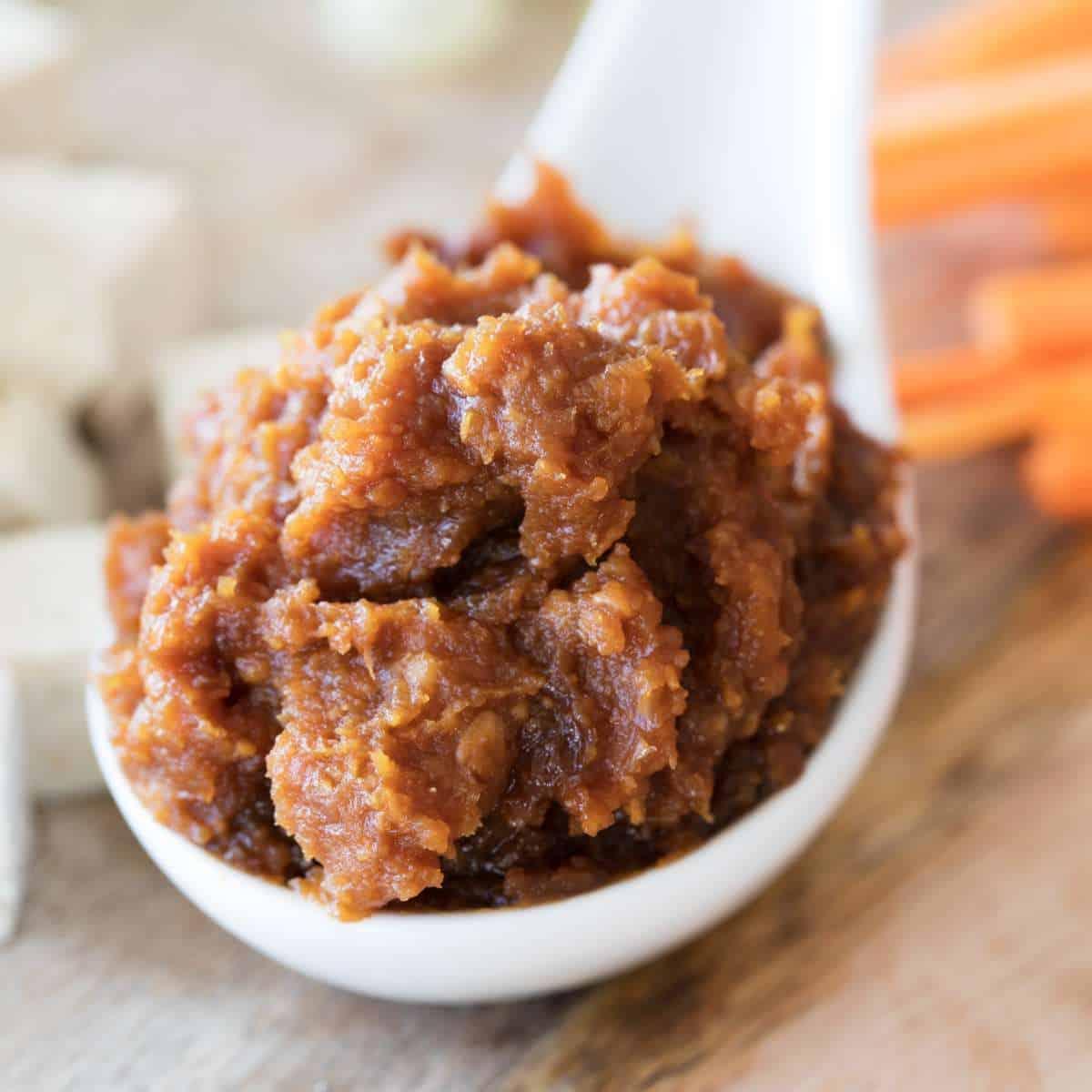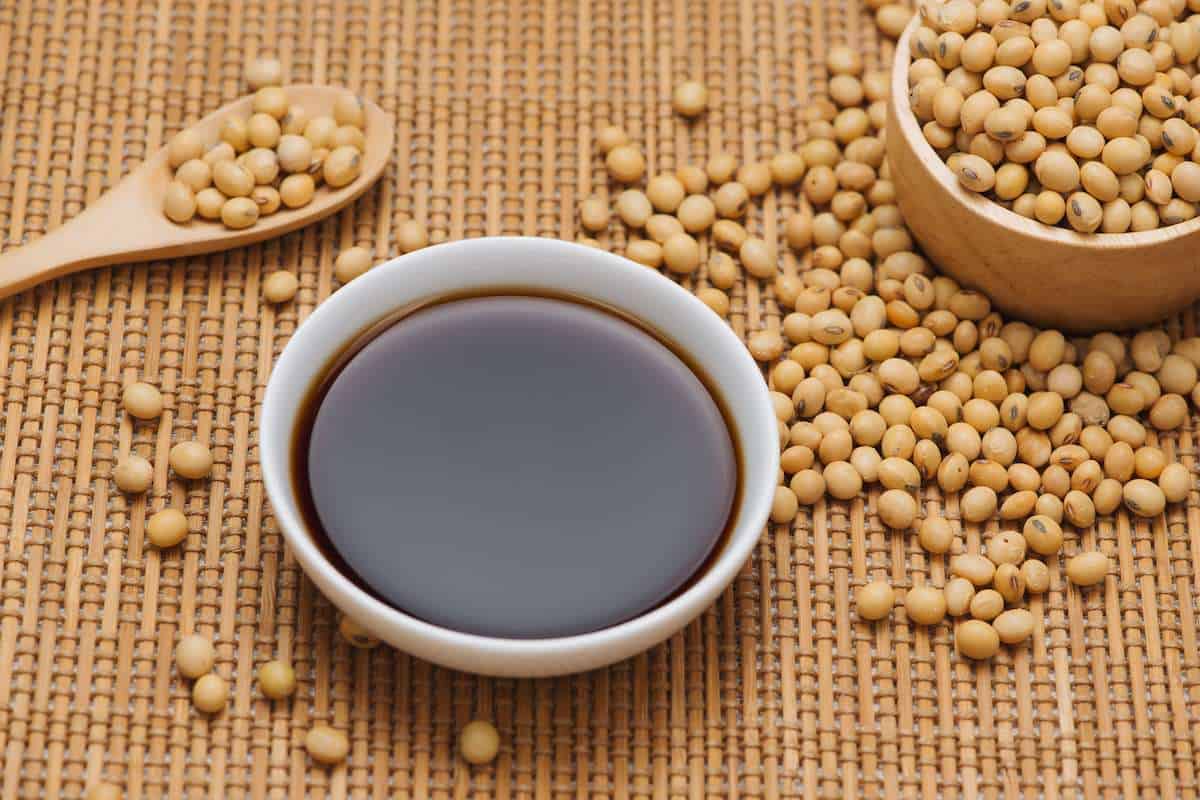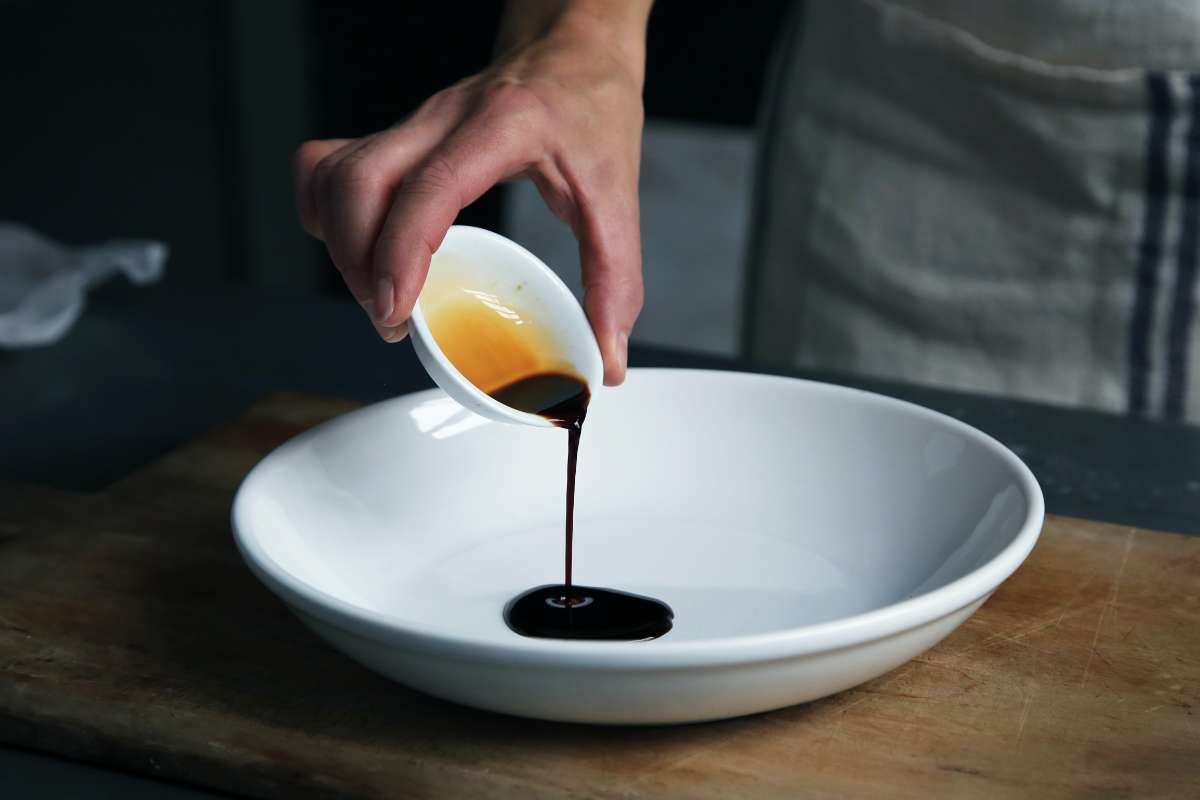
In my years of home cooking, I struggled most in finding the best miso substitute because of the paste’s complex flavor profile. Plus, miso paste is available in different varieties. However, once I understood the true umami taste, I no longer doubted what to use as a yellow miso, red or brown miso, or white miso substitute.
Of course, I wouldn’t keep this secret to myself. In this list, you’ll find some of the best miso paste substitutes you’ll never regret using in your recipes.
You are watching: 9 Best Miso Substitutes That Won’t Disappoint
Jump to:
- 9 Miso Substitutes I Highly Recommend
- Umaminess With the Right Substitute
- Recipe
9 Miso Substitutes I Highly Recommend
Whether you run out of miso paste, can’t find it in the grocery store, or need to serve someone with dietary restrictions, I made sure you’ll find the right substitute for miso paste. The following ingredients add umami flavor to your dishes, sauces, marinades, dips, and more:
1. Tamari
As a by-product of the miso paste-making process, tamari is my top option for the best white, yellow, and red miso substitute. Not only will it give your recipe the salty umami flavor it needs, but it’s also vegan-friendly and gluten free.
Expect it to have a milder flavor than red miso paste, as it’s closer to white miso paste. Thus, when using it as a yellow or red miso paste substitute, you need to add more than what your recipe calls for.
What I do is follow a 1:1 ratio and then just add more when I still haven’t achieved the right umami flavor. Meanwhile, I strictly follow a 1:1 ratio when using it as a white miso paste substitute.
Also, it’s best to adjust the amount of liquid in your recipe because tamari is liquid while miso is paste. This difference in consistency is also why I don’t recommend it for recipes requiring a creamy texture.
That said, while they don’t have a similar texture, tamari has a slightly thick consistency that won’t completely affect the overall quality of what you’re preparing.
Best for dipping sauces, salad dressings, marinades, soups, and stir-fries.
2. Soy Sauce

As a popular dipping sauce and Asian cuisine ingredient, soy sauce is the most accessible and cheapest substitute for miso paste that you can find. Like miso, it’s made from fermented soybeans and has the same umami, savory flavor.
One obvious difference is that soy sauce is a thin sauce rather than a paste. Thus, like with tamari, make sure you reduce the amount of the other liquid ingredients in your recipe and do not use it for anything that needs a creamy consistency.
While vegetarian and vegan, soy sauce isn’t gluten free because it has wheat. Another thing you have to remember before using soy sauce as a substitute for miso paste is it’s saltier than the paste and tamari.
To make sure you don’t end up preparing a too-salty dish, marinade, or sauce, reduce the amount of any ingredient with salty flavor that your recipe calls for. If it lists salt, you can even skip adding it.
Ratio-wise, you -need to use half the amount required when you substitute miso paste with soy sauce.
Best for dipping sauces, salad dressings, marinades, soups, and stir-fries.
3. Coconut Aminos
Read more : DIY Turmeric Face Mask
Coconut aminos is one of the best miso paste substitutes for those who need to serve people with soy and gluten allergies. It’s also vegan- and vegetarian-friendly as it’s made from fermented coconut palm sap. Its savory flavor closely resembles soy sauce but is less salty and has a slightly sweet taste.
Like soy sauce and tamari, coconut aminos is liquid, so you need to make sure you adjust the amount of liquid ingredients in your recipe. It also isn’t the best choice for those who need to prepare food or sauces that require the thick, creamy consistency miso paste brings to the table.
When you use it to substitute miso paste, I recommend adding it gradually, as its sweetness might make it challenging to achieve the umami-rich flavor you’re looking for. Start by dividing the amount of miso paste required in your recipe by 4. Then, taste and adjust accordingly.
Best for broths, stews, and soups.
4. Soybean Paste

Made from fermented soybeans, many beginning home cooks often confuse the soybean paste with miso paste. After all, you’ll also find white and red varieties. However, they’re two entirely different ingredients.
While soybean paste can give your recipe the umami taste it needs, this ingredient is a bit saltier than miso paste and soy sauce. It’s why I suggest that you only add a small amount at a time. I also recommend that you do away with adding salt to your recipe and reduce the amount of any other salty ingredients.
One important thing I want you to remember is that some soybean paste products have artificial flavors and preservatives. Hence, make sure that you check the product label when buying one.
Best for dipping sauces, chicken and beef marinades, stews, and soups.
5. Dashi

Dashi is undoubtedly a great miso substitute because it’s a common ingredient in Japanese cuisine, like miso paste. Not only that, but it’s actually the base ingredient for miso soup!
As a broth made from a combination of flavorful ingredients like fish bones, fish, and kelp, dashi has a rich, earthy, umami flavor. You can use it as a red miso paste substitute by simply adding the same amount as your recipe requires for miso paste.
Meanwhile, when using it as a yellow miso paste substitute, you will only need half the amount required because of dashi’s intense flavor. Lastly, add it gradually when using it as a white miso paste substitute.
Since it’s liquid like soy sauce, tamari, and coconut aminos, only consider dashi as a substitute for miso paste if your recipe doesn’t need to be creamy or thick. Also, I recommend replacing a certain amount of broth or water in your soup and stew recipe with dashi. After all, this good miso substitute is a broth in itself.
Best for soups and stews.
6. Fish Sauce

If you love cooking Asian dishes, you surely have fish sauce in your kitchen cabinet! But if you don’t have one, it’s one of the most easily accessible miso paste substitutes.
Fish sauce is made from fermented fish and will bring a salty, savory, umami taste to your recipe. It has a thinner consistency than miso paste, but the flavor is more intense; a little goes a long way with fish sauce.
It’s why I just add ¼ the amount the recipe calls for when using fish sauce as a red miso substitute. As a yellow or white miso substitute, I add it gradually to ensure I don’t over-season the dish or completely change its flavor.
Read more : Homemade Cat Repellent
It’s also best to add the fish sauce at the final stage of the cooking process, as its flavor continues to develop when you cook it longer. You don’t want that because you can end up with unbalanced flavors.
Best for seafood dishes.
7. Anchovy Paste

If the kind of taste you’re looking for in a miso alternative is that of fish sauce, but you’re worried about the difference in texture, anchovy paste is your best option. Like fish sauce, it’s made from fermented fish but has been pureed instead of liquefied.
With its bold flavor profile, only use half of the amount needed when replacing red miso with it. And like with fish sauce, add it gradually when using it as a yellow or white miso paste alternative.
Best for Southeast Asian cuisine.
8. Tahini

You should consider tahini if you’re looking for a good substitute for white miso paste because it has a similar color and texture. However, it’s also available in a richer-flavored, dark-colored variety that you can opt for if you need to substitute yellow or red miso paste.
Made from ground sesame seeds, it has a distinct nutty flavor, so it is only ideal for recipes requiring less than a teaspoon of miso paste. More than that, it can overpower your recipe’s flavor or affect the balance of flavor.
Also, tahini has a more subtle umami flavor. What I do is add a small amount of soy sauce or fish sauce when using it as a substitute for yellow or red miso paste. Otherwise, I add a pinch of salt to tahini when using it as a substitute for white miso paste.
In terms of ratio, use the same amount of tahini as the miso paste your recipe needs.
Best for marinades, sauces, and dressings.
9. Vegetable Stock or Broth

Your last option for the best miso paste substitute is vegetable stock or broth, which you most likely already have at home. They don’t have a similar flavor, but vegetable stock can give your recipe the umami flavor it needs, thanks to its salt content.
Remember that not all vegetable broth or stock products are the same. Thus, you might need to add a pinch of salt or a small amount of soy sauce or fish sauce to your recipe.
Also, like with dashi, I recommend that you replace some of the broth or water in your recipe with your vegetable stock or broth.
Best for soups and stews.
Umaminess With the Right Substitute
With a good selection of substitutes for miso paste, you’re sure to find one that will work perfectly for your recipe. Make sure to taste the ingredient before adding it to your dish, sauce, marinade, dressing, and dip to have a good idea of its distinct flavor. Doing so will allow you to determine whether you need to add more or less than the amount of miso paste your recipe requires.
Nonetheless, you can always follow my tried and tested ratio suggestions for each substitute.
Recipe
Source: https://gardencourte.com
Categories: Recipe


